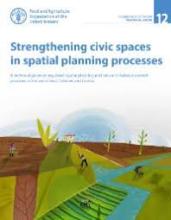Land Library
Welcome to the Land Portal Library. Explore our vast collection of open-access resources (over 74,000) including reports, journal articles, research papers, peer-reviewed publications, legal documents, videos and much more.
/ library resources
Showing items 1 through 9 of 26.Includes overview;the problem: Development Finance Institutions (DFIs) finance a destructive model;current situation: DFIs write off loans;impacted communities face repression;human rights abuses;the role of European DFIs;recommendations.
This technical guide provides strategies on how to strengthen, protect and promote legitimate tenure rights in spatial planning processes at the local, regional and national levels.
Liberia has long maintained a dual land tenure system over statutory and customary lands characterized by unclear terms of ownership. Most rural Liberians depend on common resources for their survival. These are largely communally owned;used and managed.
This booklet presents both successes and challenges faced by the people of Sierra Leone, whose lives and livelihoods are dependent on their legitimate rights to own, farm, fish, build or develop an area of land or water.
For decades food insecurity has been a challenge in Cameroon’s Far North region;mainly due to extreme weather and weak land legislation. Now the problem is escalating.
This report on the state of industrial oil palm plantations in West and Central Africa shows how communities are turning the tide on a massive land grab in the region.
Cameroon’s current land law appears to have two conflicting objectives: to attract investors through large-scale land concessions; while protecting biodiversity;defending local people’s rights and promoting rural development.
Conflict began in August 2011 when 3 village communities in eastern-central Côte d’Ivoire learned that the Belgian corporation SIAT was about to move onto their land. Report details the increasing conflicts and legal battles that followed.
Traditionally, in the context of environment and natural resources management, many communication efforts have focused on the dissemination of technical information to end-users who were expected to adopt them.




